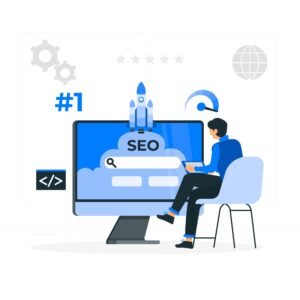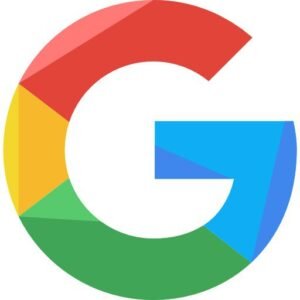Search Engine Optimization (SEO) is a complex and ever-evolving process that helps a website be better seen in search engine results. In the age of e-commerce, if a website is placed at the top of the search engine results page (SERP), it can easily attract more customers. Creating a solid search engine optimization strategy for marketing and content optimization is one of the most valuable investments business owners can make for their business. Effective Search Engine Optimization strategies are generally divided into On-Page SEO and Off-Page SEO.

On-page SEO refers to those Search Engine Optimization techniques that focus on optimizing the aspects of your website that are under your control.
Off-page SEO is part of Search Engine Optimization strategies that promote your site or brand across the web. In other words, off-page SEO emphasizes and focuses on increasing the credibility of your site’s domain through content creation and getting backlinks from other websites. On-page SEO is about creating a website that is attractive to users and can rank in search engines. Off-page SEO means gaining exposure to a website while building trust and credibility for your content.
Note: Off-Page SEO techniques and On-Page SEO are equally essential to get a standard ranking in search engines.
The Difference between On-Page and Off-Page SEO
On-Page SEO is a technique for optimizing web pages to get higher rankings and more traffic in search engines. In search engines like Google, on-page optimization affects your web page in natural search results. The most important features of this type of SEO are high-quality content, choosing the right keywords, placing keywords in the right places, and giving the right title for each page. Also, complete analysis of the website, creation of internal links, optimization of page titles and Meta descriptions, optimization of headings, and content formatting are among its other features.

Off-page SEO is a technique that can be used to improve a website’s position in the search engine results page (SERPS). It is also used in various advertising and website design methods. Some of the most important features of this type of SEO are link building, link popularity increase, search engine, and link exchange. Both types of SEO work side by side and complement each other for search engine optimization. It is impossible to say which one is more important. However, SEO experts recommend focusing on on-page SEO before off-page SEO.
Factors Affecting On-page SEO
This part of SEO involves ensuring that your website content is crawlable, indexable, and understandable by search engines.

Factors affecting On-Page SEO are:
Core Web Vitals: This option is the newest Google ranking factor. This section measures essential dimensions such as visual stability, interactivity, and loading time. Improving the performance of this part of your website tells Google that your site has a positive user experience.
Page speed: Page speed and load time are essential for On-Page SEO. Google tends to rank faster pages higher than slower pages, and optimizing page speed can also help get more of your pages into Google’s search index. Several ways to improve speed include images, JavaScript files, cache, and compression.
Title tags: Also known as page titles, these are HTML tags that specify the page’s title and describe the page’s content.
Meta description: This section, like title tags, are HTML tags that help describe the page’s content. Using Meta descriptions for SEO is one of the best on-page SEO methods to increase your page’s click-through rate in search results.
HTML headers: These headers are HTML tags that specify titles and headings in the content of a web page. For On-Page SEO, these tags help search engines know about a page’s content and relate it to the user’s search terms.
Image alt text: This option refers to the HTML image tag containing the image’s textual description. Search engines consider this section to decide whether an image is relevant to a person’s query. Alt text is one of the key on-page SEO factors for image and traditional web searches.
Internal link: Linking to other pages helps visitors easily find content related to what they are looking for. Internal linking is one of the most influential factors in improving Search Engine Optimization.
Navigation: In the context of On-Page SEO, navigation is defined in such a way that this part helps users access the content of a web page and use all its aspects.
Mobile-friendliness: Mobile-friendly pages prioritize the mobile user experience through responsive design, simple and easy navigation, and fast page speeds.
Content quality: It has been emphasized many times that content is king. Suppose they conclude that your content is helpful to the user. It is written uniquely and contains the answers to the user’s questions. In this case, it is placed in the excellent and valuable content category.

Off-page SEO factors
Off-Page SEO is a set of techniques to promote your content on other sites. The most important factors affecting this SEO are:
Social media: is an essential communication tool for online advertising in Off-Page SEO. The mission of these media is to help people find businesses online and help companies reach new and potential customers. Another important aspect of this stack is that Google indexes pages on major social media platforms. In this way, posting consistently on these sites will help you SERP to give your brand more credibility.
Backlinks: The quality and quantity of backlinks are the most critical factors for Off-Page SEO. In other words, backlinks are so important that Google has dedicated several algorithm updates to link schemes and spam.
For better performance of an Off-Page SEO, it is recommended to create links, evaluate the quality of backlinks, and perform a link audit.
Unlinked names: any time an unrelated site mentions your brand name or website online. Note that this option does not mean that saying your brand name and site without a link has no Off-Page SEO value. Characters without links act like a quote for the credibility and trust of your site. At the same time, mentions provide an excellent opportunity to generate new backlinks.
Google My Business: Google My Business (GMB) has the advantage of being able to obtain important location and service area information, business type, contact information, and business hours from Google. GMB also plays a vital role in Google Maps searches.
In short, it’s an Off-Page SEO agent for any local business that relies on traffic from a specific geographic location.
How to Improve On-page SEO and Off-page SEO
There are practical factors to consider when optimizing your web pages for On-Page SEO, such as:
- Create high-quality content
- Use target and thoughtful keywords
- Optimize images
- Make internal links
- Optimize permalinks
- Consider readability
- Utilize title tags and Meta descriptions
- Monitor site performance
- Prioritize User Experience (UX)
- Optimize pages for Mobile Devices
- Publish consistently
- Use proper URL Structures
- Improve the links by using Anchor Texts
- Search main intent
- Use schema markup
Off-Page SEO can improve essential techniques such as:
- Build backlinks
- Support social proof
- Increase online presence on social media
- Use social media
- Get linked through guest posting
- Create infographics that get shared
Conclusion
Businesses that want to reach the top position in search engines should apply Off-Page optimization techniques and On-Page optimization. You can improve your site’s visibility by using on-page and off-page SEO. Creating a balance between these two types of SEO will help your website so that your audience and search engines can better understand its content. These two types of SEO are the main factors for improving the quality and ranking of the website in search engines. You can use on/off page SEO Techniques to increase your traffic and generate traffic.

















































